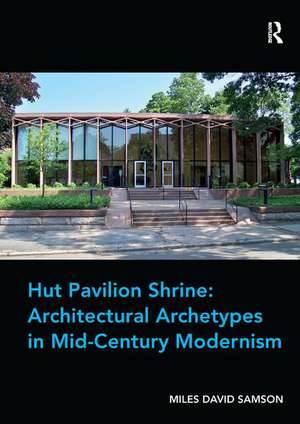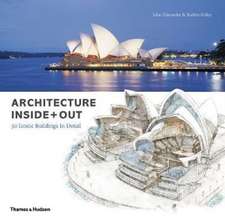Hut Pavilion Shrine: Architectural Archetypes in Mid-Century Modernism
Autor Miles David Samsonen Limba Engleză Paperback – 12 oct 2017
| Toate formatele și edițiile | Preț | Express |
|---|---|---|
| Paperback (1) | 312.43 lei 43-57 zile | |
| Taylor & Francis – 12 oct 2017 | 312.43 lei 43-57 zile | |
| Hardback (1) | 770.45 lei 43-57 zile | |
| Taylor & Francis – 28 aug 2015 | 770.45 lei 43-57 zile |
Preț: 312.43 lei
Preț vechi: 356.63 lei
-12% Nou
Puncte Express: 469
Preț estimativ în valută:
59.78€ • 62.59$ • 49.47£
59.78€ • 62.59$ • 49.47£
Carte tipărită la comandă
Livrare economică 07-21 aprilie
Preluare comenzi: 021 569.72.76
Specificații
ISBN-13: 9781138573222
ISBN-10: 1138573221
Pagini: 344
Dimensiuni: 174 x 246 x 29 mm
Greutate: 0.45 kg
Ediția:1
Editura: Taylor & Francis
Colecția Routledge
Locul publicării:Oxford, United Kingdom
ISBN-10: 1138573221
Pagini: 344
Dimensiuni: 174 x 246 x 29 mm
Greutate: 0.45 kg
Ediția:1
Editura: Taylor & Francis
Colecția Routledge
Locul publicării:Oxford, United Kingdom
Notă biografică
Miles David Samson was educated at the University of Chicago and Harvard University. He teaches art history at Worcester Polytechnic Institute. He has held fellowships at the Free University of Berlin and the Buell Center for the Study of American Architecture, Columbia University. His scholarship is in the history of architecture, especially the modern period, in relation to American visual culture. He lives in Franklin, Massachusetts with his wife and son.
Recenzii
’Hut Pavilion Shrine is a much-needed examination of the typologies that shaped postwar American modernism. Dismissed for years as meaningless formalisms, the book is a positive step towards understanding the aesthetic and intellectual content of American architecture after World War II. Further dispelling notions of mere eclecticism, it locates the origins of these typologies deep in architecture’s past. Samson successfully shows how architects previously treated monographically - among them Johnson, Rudolph, Saarinen and Kahn - had much in common intellectually.’ Timothy M. Rohan, University of Massachusetts Amherst, USA and author of The Architecture of Paul Rudolph
Cuprins
Introduction; 1: Pavillon, Cabane, Tabula Rasa; 2: Wright and Mies; 3: Philip Johnson; 4: Modernism, Modernity and Pavilion Typology, 1949–60; 5: Archetype and Order
Descriere
Hut Pavilion Shrine examines the crossroads of modernism and the archetypal, and critiques its buildings and theory, It concentrates on one particularly important and omnipresent type, the pavilion - a type which was the basis of major work by several eminent architects. While focusing primarily on the architecture culture of the United States, it also includes the work of British, European Team X, and Scandinavian designers and writers. The book ties together the threads in mid-century architectural theory and discusses how these concerns outlived the mid-century moment, and in the designs and writings of Aldo Rossi and others they paved the way for Post-Modernism.






















